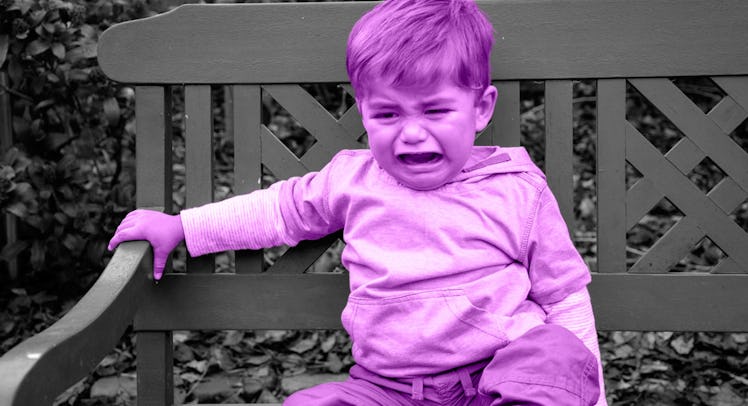How to Prevent Young Kids From Getting Overstimulated
Every kid can be pushed past their level of tolerance. When parents know the signs, they can learn how to avoid it.

When it comes to children’s activities, there can definitely be too much of a good thing. That’s why kids can burst into tears at the amusement park, the movies, or even their own birthday parties. The activity is all too much for them – specifically, too much stimulation. Parents may make allowances for kids being tired, but kids can easily be overwhelmed and overstimulated long before they are physically tired.
“Everyone responds to different sensory information in different ways,” says Amy Baez, a pediatric occupational therapist and the founder of Playapy. “Some children (and even adults) have a low threshold for certain information, so they respond negatively to this information much quicker than a typical child would.”
The threshold of overstimulation can vary due to a number of factors, including if a child is on the autism spectrum, but even children with typical high stimuli thresholds can be overstimulated if the stimulation is sustained for long periods of time. Any parent who has seen a happy kid suddenly flip into a snot-spewing sob factory after a day at the “happiest place on earth” has experienced this.
The particular symptoms may vary, but the aforementioned crying, along with crankiness, tantrums, or over meltdowns, is common in neurotypical kids. They may demonstrate aggression, hyperactivity, or wild excitement. Or they could go the complete opposite and zone out, withdraw, or show typical symptoms of sleepiness like rubbing their eyes or face. Overstimulated kids don’t know how to deal with what they are feeling, or articulate their distress, and so they act out. It’s easy to confuse this with needing a nap or simple tiredness, especially since withdrawing from the stimulation, ostensibly to give the kids a chance to rest, can work.
It can be difficult to determine exactly what the child is reacting to, since children can be overstimulated by anything – sound, taste, sight, touch, smell, movement, and pressure on joints. An itchy sweater can cause a tantrum. A bunched up sweatshirt in a car seat can cause a crying fit. Once a parent can identify the signs of an overstimulated kid, they can look for causes and try to avoid them in the future. And that, according to Baez, is the best way to manage it.
How to Know When a Child is Overstimulated
- Out-of-character behavior is a sign. Overstimulation can looks like tantrums and crankiness, aggression or wild enthusiasm, or even sleepiness. If a kid seems off, something is up.
- Any sense can be overstimulated – sound, taste, sight, touch, smell, movement, and also pressure on joints. Movement-related overstimulation can present as loss of balance, dizziness, or vomiting.
- Long days can push even neurotypical kids past their breaking point – it’s why amusement park trips so often end badly.
- Take a break from the stimulation if possible. If not, parents can also show their child coping techniques like breathing exercises, drinking water, lying on the ground, going for a walk, or refocusing on a soothing object.
“Understanding how your child responds to different types of sensory stimuli will help you as a parent to prevent crossing over a threshold that leads to a child acting out from overstimulation,” advises Baez. “You can also introduce a child to coping techniques like breathing exercises, drinking water, lying on the ground, going for a walk, or refocusing on a soothing object like a calming glitter bottle.”
If a child is only overstimulated occasionally, it’s not something that parents need to be concerned about beyond those extraordinary circumstances in which it occurs. But if it is a daily occurrence for a family, parents should consider consulting with a doctor.
“If you are rearranging your life around the overstimulation of a child on a regular basis, the child may require medical intervention, including possibly sensory integration therapy with a pediatric occupational therapist,” suggests Baez.
Depending on the severity and frequency of the reactions, parents may be able to manage these behaviors on their own. If it starts to deleteriously effect a child’s developmental skills, a pediatrician may recommend a specialist to develop a home program to help avoid these scenarios.
This article was originally published on